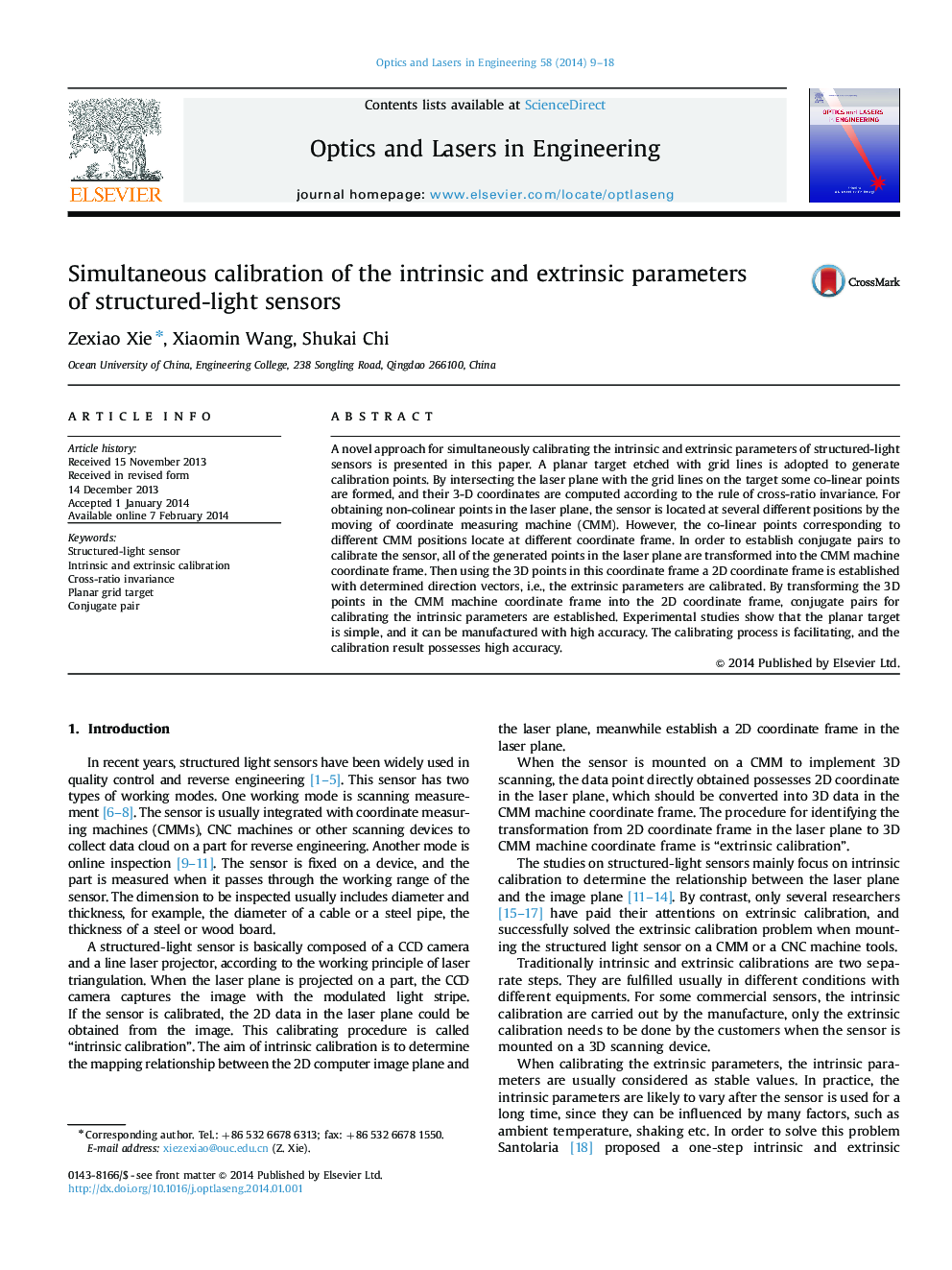| Article ID | Journal | Published Year | Pages | File Type |
|---|---|---|---|---|
| 743491 | Optics and Lasers in Engineering | 2014 | 10 Pages |
•A one-step method for intrinsic and extrinsic calibration of structured-light sensors.•A planar target with grid lines is adopted to generate calibration points.•Calibration points are formed by intersecting the laser plane with the grid lines.•All intersected points in laser plane are transformed into CMM coordinate frame.•The target is simple, the calibrating process is facilitating with high accuracy.
A novel approach for simultaneously calibrating the intrinsic and extrinsic parameters of structured-light sensors is presented in this paper. A planar target etched with grid lines is adopted to generate calibration points. By intersecting the laser plane with the grid lines on the target some co-linear points are formed, and their 3-D coordinates are computed according to the rule of cross-ratio invariance. For obtaining non-colinear points in the laser plane, the sensor is located at several different positions by the moving of coordinate measuring machine (CMM). However, the co-linear points corresponding to different CMM positions locate at different coordinate frame. In order to establish conjugate pairs to calibrate the sensor, all of the generated points in the laser plane are transformed into the CMM machine coordinate frame. Then using the 3D points in this coordinate frame a 2D coordinate frame is established with determined direction vectors, i.e., the extrinsic parameters are calibrated. By transforming the 3D points in the CMM machine coordinate frame into the 2D coordinate frame, conjugate pairs for calibrating the intrinsic parameters are established. Experimental studies show that the planar target is simple, and it can be manufactured with high accuracy. The calibrating process is facilitating, and the calibration result possesses high accuracy.
